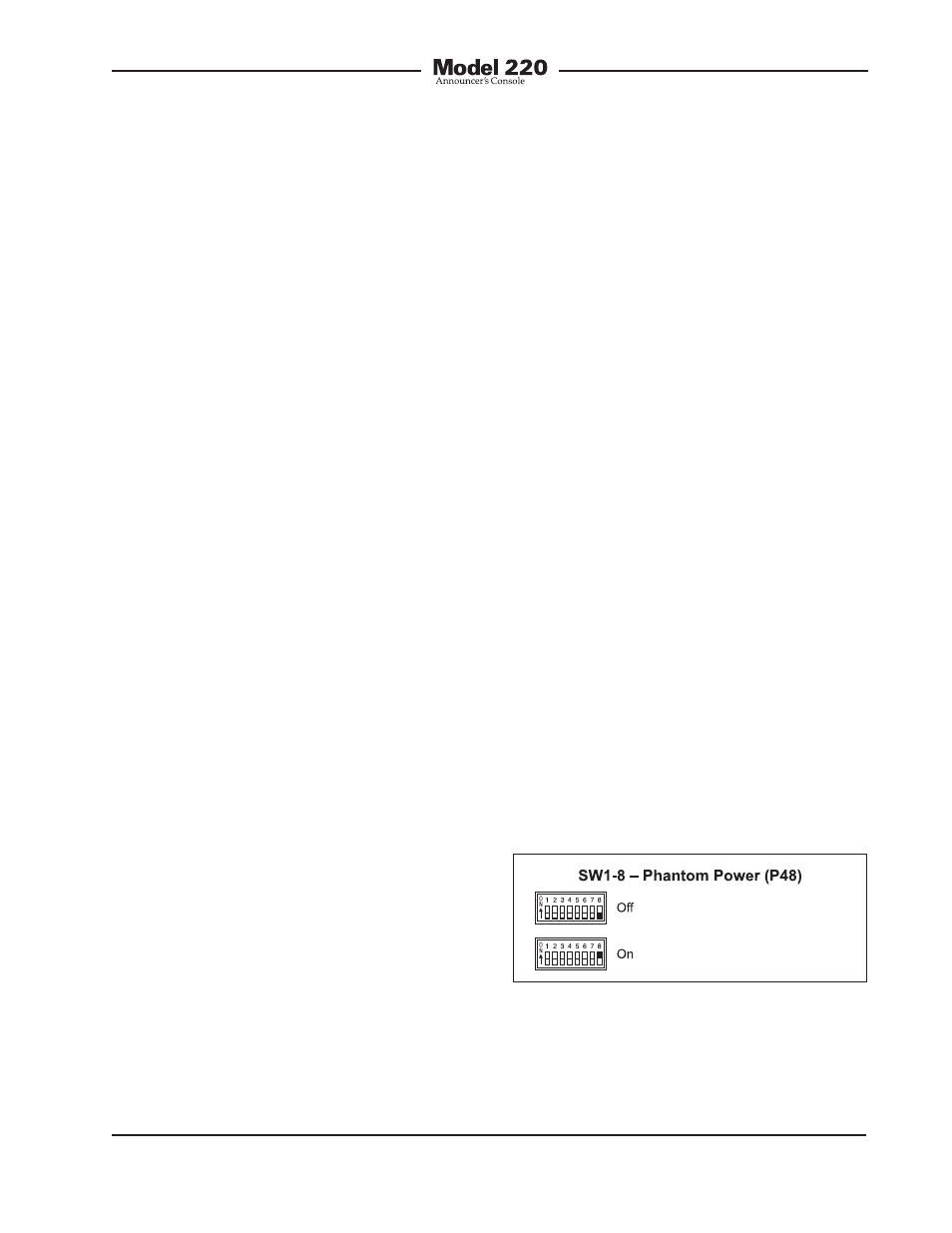Studio Technologies 220 2013 User Manual
Page 17

Model 220 User Guide
Issue 5, February 2013
Studio Technologies, Inc.
Page 17
Unfortunately, there’s no “perfect” gain
setting that this guide can recommend.
The two issues that impact the setting are
output sensitivity of the connected micro-
phone and the acoustical output level of
the microphone’s user. With some headset
microphones, such as the Sennheiser HMD
26, selecting an initial setting of 40 dB is
appropriate. Users who speak loudly might
need to have the gain reduced to 30 dB.
Quiet users might need 50 dB of gain.
An LED indicator is provided as an aid in
correctly setting the gain of the microphone
preamplifier. Red in color, this LED is locat-
ed adjacent to switch assembly 1. It is vis-
ible by observing the bottom of the Model
220’s enclosure when the security plate
has been removed. Technically, this red
LED lights whenever the compressor cir-
cuitry is controlling the dynamic range of
the signal coming from the microphone
preamplifier. The threshold is set to be
2 dB above the Model 220’s nominal in-
ternal operating level. So a good “rule of
thumb” is to adjust the gain of the micro-
phone preamplifier so that the compres-
sor active LED lights (“flashes”) when the
connected microphone is sending signal
peaks. During normal operation the LED
should not remain fully lit when audio is
present on the mic input.
It’s important to remember that the com-
pressor active LED is used to assist in set-
ting the gain to the optimal value. It doesn’t
necessarily indicate that the main output’s
signal is being compressed. Unless specifi-
cally configured to do otherwise, the out-
put of the compressor is only used for the
talkback outputs.
It’s expected that the 20 and 60 dB gain
settings will not often be used. But there
are always exceptions and that’s why they
were included. It’s possible that with a
very “hot” microphone, such as a phan-
tom-powered condenser type, 20 dB of
gain could be correct. It’s also possible
that a microphone with a very low-level
output, such as a ribbon-type, would need
60 dB of gain. But in general, the 30, 40,
and 50 dB gain settings will serve most
applications.
Note that if no gain switch is set to its
active (on) position the preamplifier will
operate at unity (0 dB) gain. This is provid-
ed for compatibility when line-level signals
need to be connected to the microphone
input. But with a microphone connected
as the input source one should never
use the 0 dB setting. The issue is that
with no gain added to the microphone
input signal, the relative noise floor on
the main and talkback outputs will be
much too high.
Phantom Power On/Off
The Model 220 can provide 48 volt phan-
tom power to a connected microphone.
Switch SW1-8 controls whether or not
phantom power is active. By phantom
power’s very nature it could be left applied
to the microphone input at all times. But
generally people prefer to turn it off unless
required for a specific microphone.
Figure 5. Phantom power switch settings
